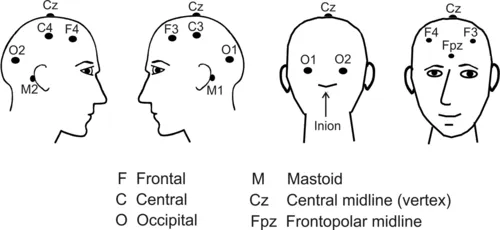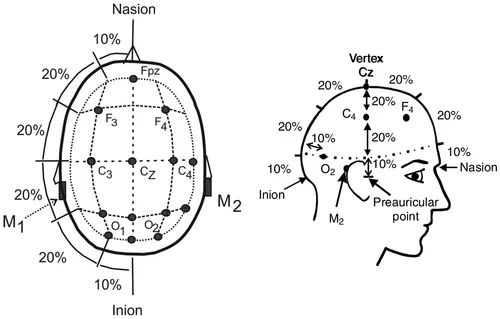
- 580 pages
- English
- ePUB (mobile friendly)
- Available on iOS & Android
Sleep Medicine Pearls E-Book
About this book
Sleep Medicine is a rapidly growing and changing field. Experienced sleep medicine clinicians and educators Richard B. Berry, MD and Mary H. Wagner, MD present the completely revised, third edition of Sleep Medicine Pearls featuring 150 cases that review key elements in the evaluation and management of a wide variety of sleep disorders. The cases are preceded by short fundamentals chapters that present enough basic information so that a physician new to sleep medicine can start reading page 1 and quickly learn the essential information needed to care for patients with sleep disorders. A concise, practical format makes this an ideal resource for sleep medicine physicians in active practice, sleep fellows learning sleep medicine, and physicians studying for the sleep boards.- Consult this title on your favorite e-reader, conduct rapid searches, and adjust font sizes for optimal readability.- Zero in on the practical, "case-based" information you need to effectively interpret sleep studies (polysomnography, home sleep testing, multiple sleep latency testing), sleep logs, and actigraphy.- Get clear, visual guidance with numerous figures and sleep tracings illustrating important concepts that teach the reader how to recognize important patterns needed to diagnose sleep disorders.- Confer on the go with short, templated chapters—ideal for use by busy physicians. A combination of brief didactic material followed by case-based examples illustrates major points.- Stay current with knowledge about the latest developments in sleep medicine by reading updated chapters using the new diagnostic criteria of the recently published International Classification of Sleep Disorder, 3rd Edition and sleep staging and respiratory event scoring using updated versions of the scoring manual of the American Academy of Sleep Medicine Manual for the Scoring of Sleep and Associated Events.- Benefit from Drs. Berry and Wagner's 25+ years of clinical experience providing care for patients with sleep disorders and educational expertise from presenting lectures at local, regional and national sleep medicine courses. Dr Berry was awarded the AASM Excellence in Education Award in 2010.- Access the full contents online at ExpertConsult.
Frequently asked questions
- Essential is ideal for learners and professionals who enjoy exploring a wide range of subjects. Access the Essential Library with 800,000+ trusted titles and best-sellers across business, personal growth, and the humanities. Includes unlimited reading time and Standard Read Aloud voice.
- Complete: Perfect for advanced learners and researchers needing full, unrestricted access. Unlock 1.4M+ books across hundreds of subjects, including academic and specialized titles. The Complete Plan also includes advanced features like Premium Read Aloud and Research Assistant.
Please note we cannot support devices running on iOS 13 and Android 7 or earlier. Learn more about using the app.
Introduction
| R&K | AASM | |
| Wake | Stage W | Stage W |
| NREM | Stage 1 | Stage N1 |
| Stage 2 | Stage N2 | |
| Stage 3 | Stage N3 | |
| Stage 4 | ||
| REM | Stage REM | Stage R |
Time Window for Staging Sleep
| Window Duration | Use |
| 30 seconds (an epoch) | Sleep staging |
| 60–120 seconds | Respiratory Events |
| 15 seconds | Clinical EEG |
| 10 seconds | ECG rhythms Identifying wave form frequency |
Electroencephalography Monitoring


Electroencephalography Derivations
Table of contents
- Cover image
- Title page
- Table of Contents
- Copyright
- Dedication
- Preface
- Video Contents
- Fundamentals 1: Sleep Stage Nomenclature and Basic Monitoring of Sleep
- Fundamentals 2: Electroencephalography and Electrooculography Patterns of Interest for Staging Sleep
- Fundamentals 3: Sleep Staging in Adults I
- Fundamentals 4: Scoring Stage R
- Fundamentals 5: Arousals and Major Body Movements
- Fundamentals 6: Sleep Staging in Infants and Children
- Fundamentals 7: Sleep Architecture Terminology and Normal Patterns
- Fundamentals 8: Effects of Sleep Disorders and Medications on Sleep Architecture
- Fundamentals 9: Polysomnography I
- Fundamentals 10: Indications for Polysomnography, Portable Monitoring, and Actigraphy
- Fundamentals 11: Artifacts
- Fundamentals 12: Monitoring Respiration
- Fundamentals 13: Respiratory Event Definitions in Adults
- Fundamentals 14: Respiratory Events in Children
- Fundamentals 15: Electrocardiography Monitoring During Sleep Studies
- Fundamentals 16: Monitoring Limb and Other Movements During Sleep
- Fundamentals 17: Subjective and Objective Measures of Sleepiness
- Fundamentals 18: Sleepiness and Sleep Complaints in Children
- Fundamentals 19: Diagnosis of Obstructive Sleep Apnea Syndromes in Adults
- Fundamentals 20: Obstructive Sleep Apnea in Adults: Epidemiology and Variants
- Fundamentals 21: Pediatric Obstructive Sleep Apnea
- Fundamentals 22: Obstructive Sleep Apnea: Treatment Overview and Medical Treatments
- Fundamentals 23: PAP Modes and Treatment
- Fundamentals 24: PAP Titration and Auto-Titration
- Fundamentals 25: PAP Adherence
- Fundamentals 26: Surgical Treatment for Obstructive Sleep Apnea
- Fundamentals 27: Oral Appliance Treatment for Obstructive Sleep Apnea
- Fundamentals 28: Asthma and COPD
- Fundamentals 29: Central Sleep Apnea and Sleep-Related Hypoventilation Disorders
- Fundamentals 30: Advanced PAP Modes and NPPV Titration
- Fundamentals 31: Diagnosis of RLS and PLMD
- Fundamentals 32: Treatment of RLS and PLMD
- Fundamentals 33: Hypersomnolence of Central Origin-I
- Fundamentals 34: Hypersomnolence of Central Origin II
- Fundamentals 35: Parasomnia
- Fundamentals 36: Clinical Electroencephalography and Epilepsy
- Fundamentals 37: Evaluation of Insomnia
- Fundamentals 38: Behavioral Treatment of Insomnia
- Fundamentals 39: Pharmacologic Treatment of Insomnia
- Fundamentals 40: Circadian Rhythm Sleep-Wake Disorders
- Fundamentals 41: Psychiatry and Sleep
- Appendix 1: Normal Ranges for Sleep Architecture
- Appendix 2: Typical Values for Sleep Parameters in Normal Children
- Appendix 3: Medicare Guidelines for Reimbursement for Respiratory Assist Device
- Glossary
- Index